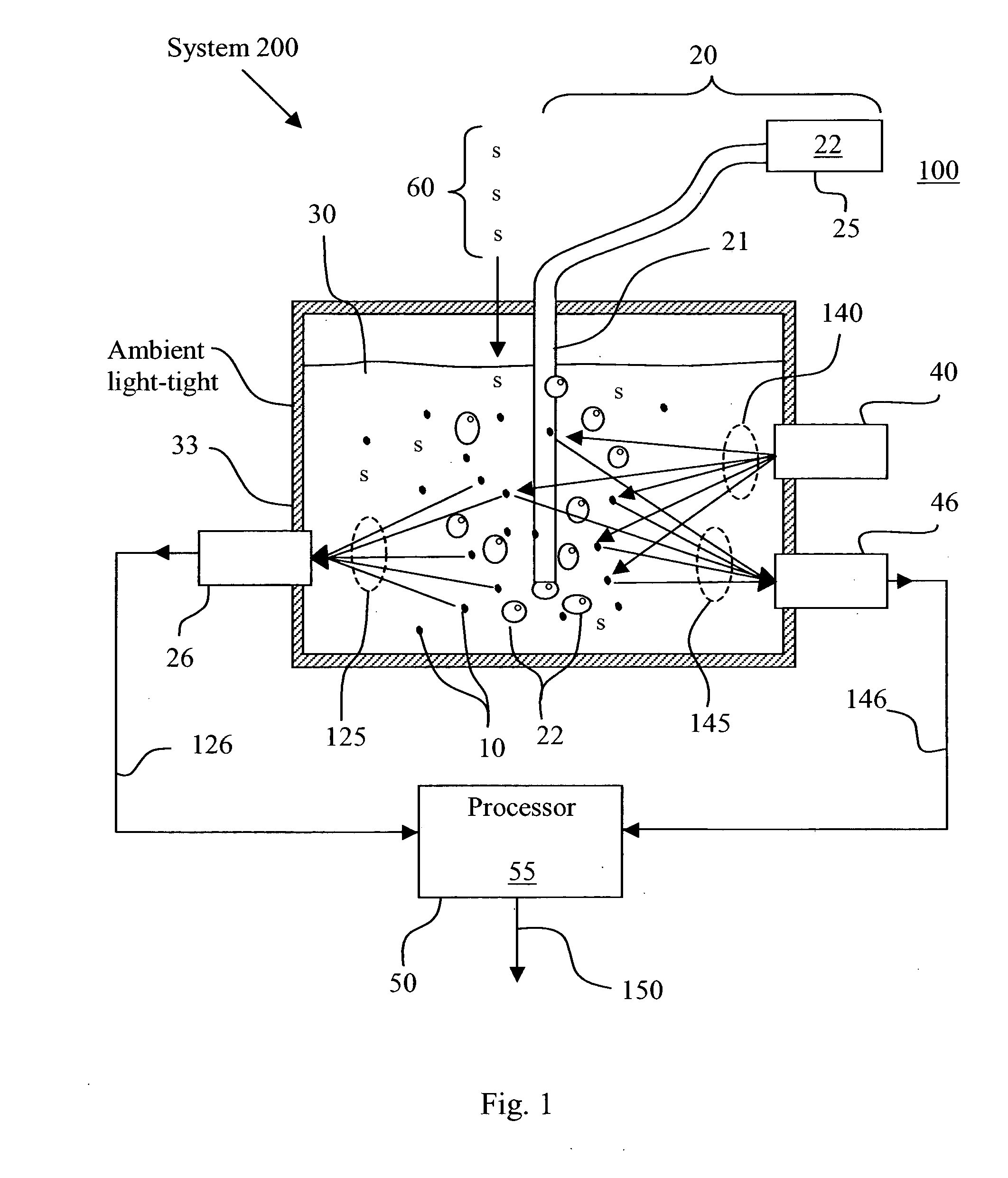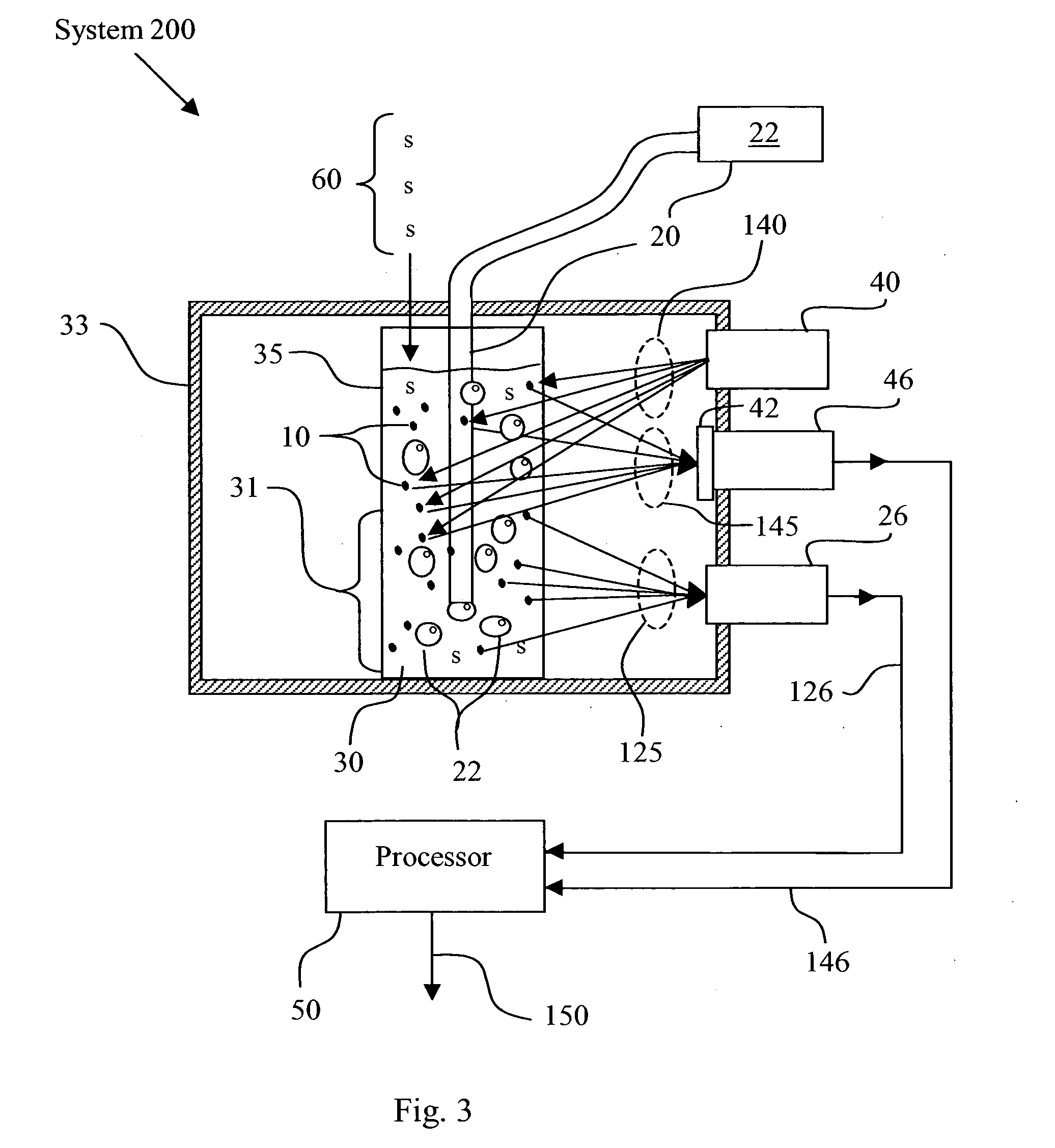Automated, field-portable system for conducting toxicity measurements in water, soils, and sediments
a field-portable, automatic technology, applied in the direction of instruments, biomass after-treatment, specific use bioreactors/fermenters, etc., can solve the problems of requiring the skill of a laboratory technician, prone to user error, and complex current systems for determining the toxicity of soils, sediments, water,
- Summary
- Abstract
- Description
- Claims
- Application Information
AI Technical Summary
Benefits of technology
Problems solved by technology
Method used
Image
Examples
Embodiment Construction
[0017]FIG. 1 shows a toxicity test system 200, a field-portable system for determining the toxicity of a test sample 60, such as water, soil and / or sediment. FIG. 1 shows how the test sample 60 may be added to an aqueous suspension 30 of dinoflagellates 10, which all may be contained in a test chamber 33. Inside the test chamber 33, if the dinoflagellates 10 are alive, the dinoflagellates 10 may be excited to fluoresce by an excitation signal 140 generated by an optical signal generator 40. The fluoresce signal 145 emitted by the excited dinoflagellates 10 may be detected by a first optical transducer 46 that is configured to produce a first data signal 146 in response to detecting the fluorescence signal 145. The first data signal 146 may be sent to a processor 50 where the first data signal 146 may be compared to control data 55. The dinoflagellates 10, inside the test chamber 33, may also be stimulated by a gas 22 to emit a bioluminescence signal 125 if the dinoflagellates 10 are...
PUM
| Property | Measurement | Unit |
|---|---|---|
| wavelength | aaaaa | aaaaa |
| wavelength | aaaaa | aaaaa |
| wavelength | aaaaa | aaaaa |
Abstract
Description
Claims
Application Information
 Login to View More
Login to View More - R&D
- Intellectual Property
- Life Sciences
- Materials
- Tech Scout
- Unparalleled Data Quality
- Higher Quality Content
- 60% Fewer Hallucinations
Browse by: Latest US Patents, China's latest patents, Technical Efficacy Thesaurus, Application Domain, Technology Topic, Popular Technical Reports.
© 2025 PatSnap. All rights reserved.Legal|Privacy policy|Modern Slavery Act Transparency Statement|Sitemap|About US| Contact US: help@patsnap.com



